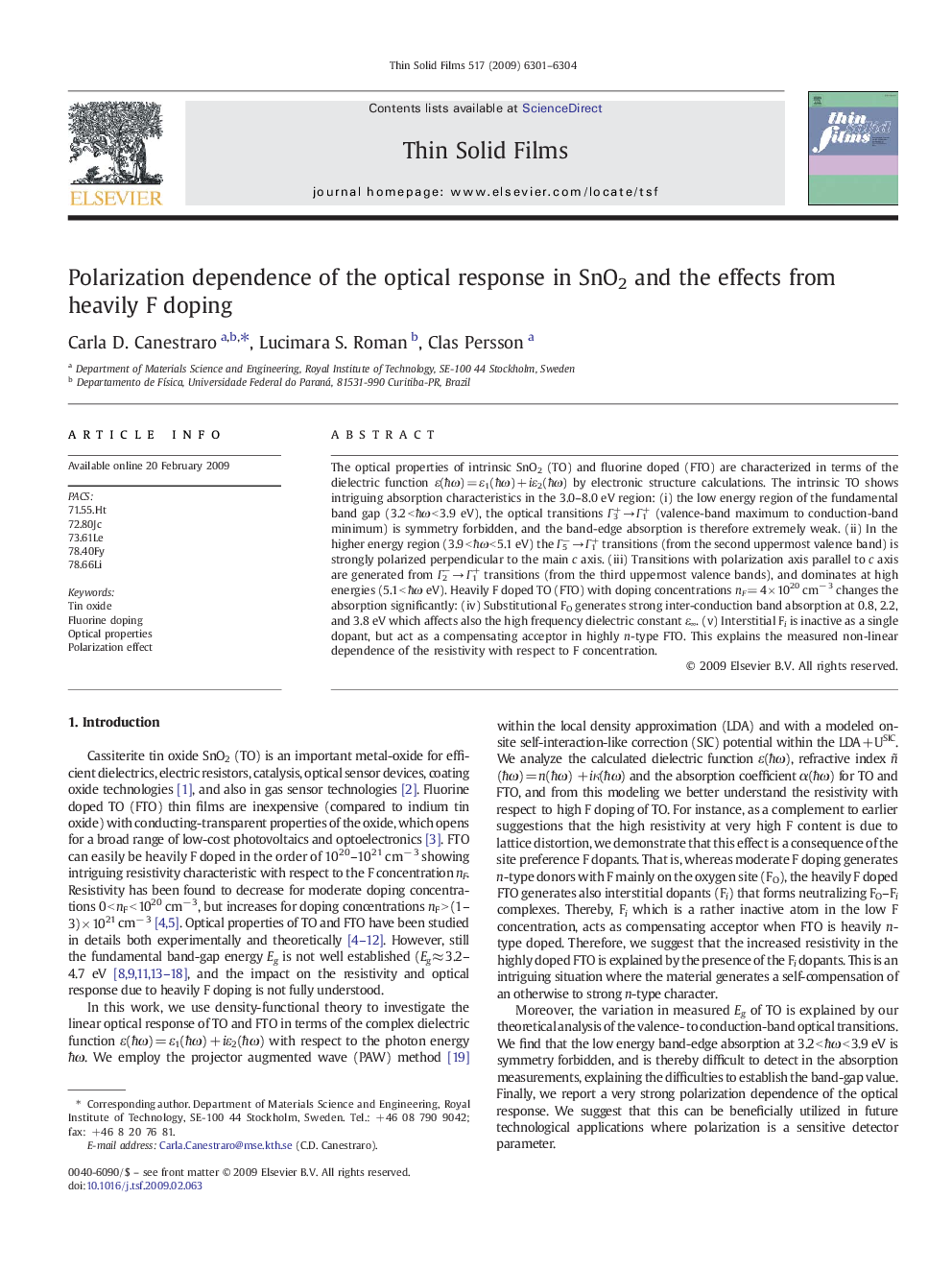| Article ID | Journal | Published Year | Pages | File Type |
|---|---|---|---|---|
| 1671988 | Thin Solid Films | 2009 | 4 Pages |
The optical properties of intrinsic SnO2 (TO) and fluorine doped (FTO) are characterized in terms of the dielectric function ε(ħω) = ε1(ħω) + iε2(ħω) by electronic structure calculations. The intrinsic TO shows intriguing absorption characteristics in the 3.0–8.0 eV region: (i) the low energy region of the fundamental band gap (3.2 < ħω < 3.9 eV), the optical transitions Г3+ → Г1+ (valence-band maximum to conduction-band minimum) is symmetry forbidden, and the band-edge absorption is therefore extremely weak. (ii) In the higher energy region (3.9 < ħω < 5.1 eV) the Г5− → Г1+ transitions (from the second uppermost valence band) is strongly polarized perpendicular to the main c axis. (iii) Transitions with polarization axis parallel to c axis are generated from Г2− → Г1+ transitions (from the third uppermost valence bands), and dominates at high energies (5.1 < ħω eV). Heavily F doped TO (FTO) with doping concentrations nF = 4 × 1020 cm− 3 changes the absorption significantly: (iv) Substitutional FO generates strong inter-conduction band absorption at 0.8, 2.2, and 3.8 eV which affects also the high frequency dielectric constant ε∞. (v) Interstitial Fi is inactive as a single dopant, but act as a compensating acceptor in highly n-type FTO. This explains the measured non-linear dependence of the resistivity with respect to F concentration.
